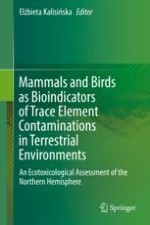
2019 | OriginalPaper | Buchkapitel
1. Human Population Increase and Changes in Production and Usage of Trace Elements in the Twentieth Century and First Decades of the Twenty-First Century
verfasst von : Elżbieta Kalisińska
Erschienen in: Mammals and Birds as Bioindicators of Trace Element Contaminations in Terrestrial Environments
Aktivieren Sie unsere intelligente Suche, um passende Fachinhalte oder Patente zu finden.
Wählen Sie Textabschnitte aus um mit Künstlicher Intelligenz passenden Patente zu finden. powered by
Markieren Sie Textabschnitte, um KI-gestützt weitere passende Inhalte zu finden. powered by